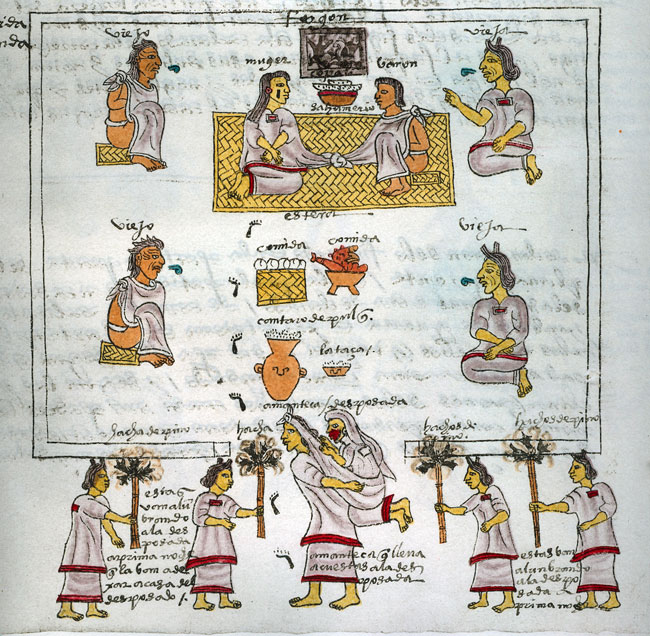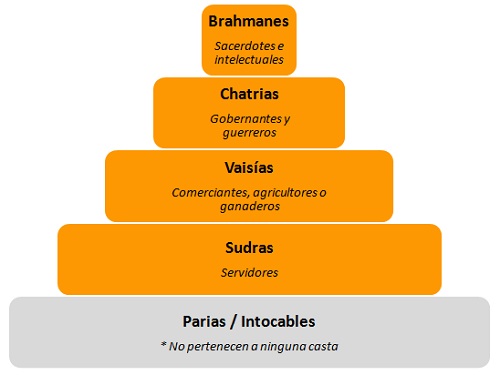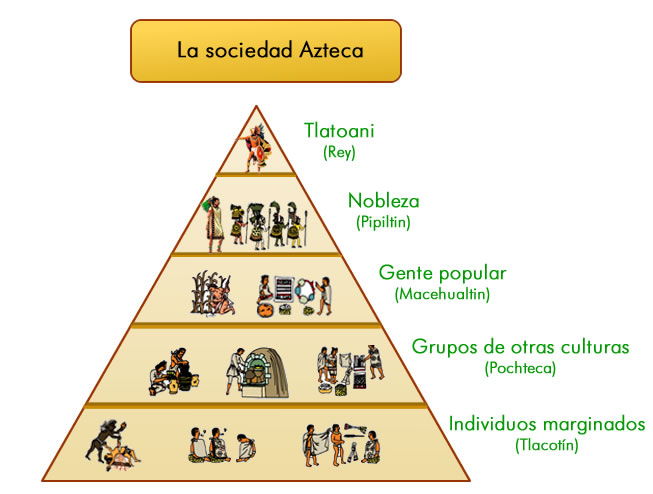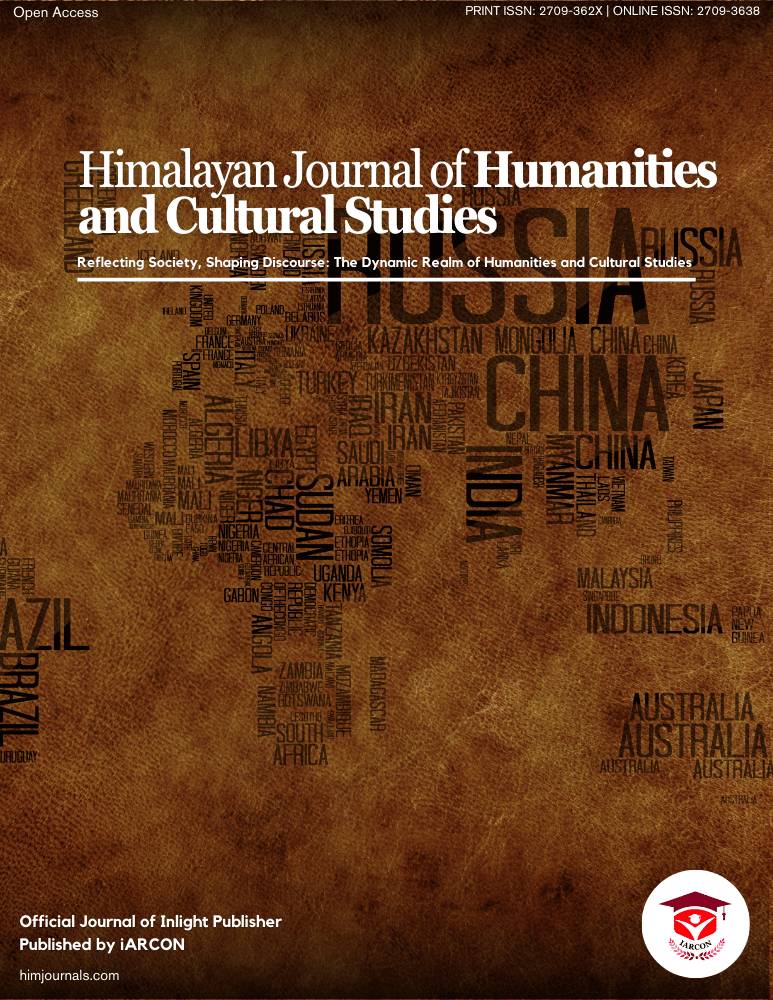In the words of Jose Marti in his famous work Nuestra América, he writes that “the man and his culture is a mestizo and rejected the race, speaking that the race is a myth because descendants of many communities indigenous, European, African, Asian have few languages to understand except those of the colonizers [1].”
During the Neolithic age when many cities and civilizations were born, there may have been contact between various different civilizations. This contact that emerged in the west and continued in the east and extended in India, China to the Pacific Ocean and finally in Mesoamerica and southern Andes. With this contact of different civilizations, it is possible that there are genes from different countries in the native population of Mexico and this may be the first connection between the two countries. Enrique Dussel in his book "The Invention of the Americas" in the chapter "Amerindian in a Non-Eurocentric vision of world History" writes that “In order, however, to locate the Indians' real place in history, it is essential to return to the Neolithic revolution, which witnessed the birth of agriculture and cities […] began primarily in the West, first in Mesopotamia and later in Egypt, and then surged forward toward the East, usually with few contacts between civilizations. This revolution spread eastward to the Indus valley, to China's Yellow River valley, to the Pacific Ocean region, and finally into Mesoamerica, home of the Mayan and Aztec civilizations, and the southern Andes, where the Incas resided [2-4].”
Culture
Religious Beliefs: In Octavio Paz’s novel, Visilumbres de la India, Mr. Rama Rau says “We ourselves, until recently, were a colony” shedding light on the reality that the two countries had been colonies of European Union, one from Spain and the other from the United Kingdom. Apart from this, there is an ancient connection between the Mayan and the Indian culture. One of them is that in both cultures one believes in the existence of the Trinity, the Mayas believed that the three universes are composed of the Jaguar (material), The Serpent (mind) and the bird (spirit). One finds the parallel in the Hindu philosophy where one speaks about the existence of a universe led by the Trimurti (also called The Hindu Trinity) of Brahma (the creator), Vishnu (the sustainer) and Shiva or Mahesh (the destroyer).
One of the gods known in both countries is the Hindu god Triloknath, which is one of the names of Shiva, was known to Mexicans with the same name until the Spaniards arrived and changed the name to the Tloque Nahuaque.
There is a similarity between the culture of the Aztecs and the Indians also, in the Aztec culture there are thirteen levels of paradise and nine of Hell, each with their own God, at the same time the Hindu texts speak of the Thirteen Lokas (worlds) below the Earth and seven Lokas above the Earth. The Mayas like the Indians had many gods, there were many temples and idols for each God that was different and unique in their own way, apart from the public temples the priests and the leaders of the Empire had shrines and idols in their houses where they prayed. The Maya not only had idols of gods but also of animals and insects, something very similar to the beliefs of India, where one considers animals and insects as gods [5,6].
The Cosmological Connection
The two cultures had a concept of four Yuga cycles or of the cosmological seasons, spreading in thousands of years. Both cultures also have twelve constellations with a reference of the sun. With all these similarities we see a very interesting connection between the two countries. It is surprising how two countries so far have such a similar culture. India and Mexico seem to be like brothers separated over the years and time but still have the same blood running through their veins, made of the same DNA.
E.C.Krupp, one of the best astronomers of the USA, says in his work “Echoes of the Ancient Skies” that the Maya had one of the most advanced traditions of the calendar and astronomy. According to the Puranas, the religious texts of the Hindu, the Asuras are dedicated to the Planet Venus and on the other hand the Devas are dedicated to the Planet Jupiter. It doesn’t seem to be a coincidence that the inhabitants of the Indus civilization had a calendar based on the planet Jupiter, a tradition that still continues in India. The Mayan civilization unlike any other known civilization had a meticulous timetable dictated by the planet Venus. That is to say that the Indians are the Devas and the Mayas are the Asuras [7].
Family and the Roles Placed by Men and Women
The two countries have a great similarity in this area as well. During the Aztec empire of Mesoamerica, they had a structure where women engaged in raising children, preparing food and making ceramic containers of black, white and coffee with red ornaments. Sometimes they also dedicated themselves to produce their clothes and that of their family while the men leave very early to the lake zone close to their houses to dedicate themselves to catching small fishes and insects. Accompanied by their sons, it was the father’s responsibility to teach them how to use some of the working tools like slings and spear to be able to hunt ducks from time to time for lunch or dinner [8].
This does not seem strange to Indians in India because gender roles were almost the same. In Aryan civilization like the Aztec, men were the superiors of the house because they worked and brought food to the table and also taught their children the family trade and women had the role of maintaining the house. This included looking after the children, cooking, cleaning the house, sometimes producing clothes etc. Furthermore, to these responsibilities, she had to please her husband, as the husbands had a very important role in the lives of their wives. In return, these were the roles that the sons would adopt when they would grow up [9].
Even now the family is extremely important and forms the core of the Mexican society. Apart from the big metropolitan cities, families are usually big just as in India. The extended family is as important as the central family because it gives a sense of stability. Mexicans consider it to be their responsibility and duty to help family members. This is the same in Indian society as well. The family and the extended family form a very integral part and is the nucleus of the Indian society. The extended family in both the countries always help with problems, for e.g. with work, money, advices etc. The majority of the Mexican families are traditional, with the father being the head of the family, the figure of authority and the decision maker. The mothers are venerated but their role can be considered as secondary as compared to their husbands, this is similar to that of the Indian society where the head of the family is the father while the mother has a secondary role [10].
Marriage
In the Aztec society the marriage is celebrated after the sunset and the parents arranged the marriages. The groom's parents always started the marriage process. After consulting with his family and relatives, the parents spoke with a matchmaker (ah Atanzah) and that matchmaker spoke to the bride's family. The young bride's parents would then tell the matchmaker if they accepted the marriage proposal or not. If they accepted a marriage proposal, both parents decide on an auspicious day for the wedding (Figure 1).
The wedding celebration lasts for four days, and the wedding ceremony is celebrated on the first day. The bride wore fine suits and her relatives would adore her arms and legs with red feathers, and paint her face with a paste containing small shiny crystals. The wedding would be in the groom’s house and a matron carried the bride on the back up until the groom’s house.
As we can see in the below image, the bride and the groom sit on a carpet or a rug next to each other; the bride takes the groom’s right hand and the groom takes her left hand. Then, after the mother in laws gives the gifts and clothes, the formal moment of the wedding arrives: the matchmaker knots the edges of the huipil of the bride and the cloak of the groom. There’s a fire in the centre and the incense is lighted as an offering to the gods and goddesses. This was done in the presence of four witnesses, who then gave the newlywed delicacies and advice on marital life. The marriage was consummated after four days.
This process of arranging a marriage is similar to that of India, although there are some differences in Indian culture. The parents arrange Indian marriages like those of the Aztecs and the beginning of the process is the same as well, they consult with a matchmaker who has a database of the prospects for the bride or the groom. The matchmaker talks to the bride's parents and if they accept, like the Aztecs, they decide a lucky day for the wedding. Although in India, astrology has a very important role to play and continues to play an important role even now, this process arose for the first time in the Vedic scriptures during the Aryan civilization [11].

Figure 1: A depiction of the Aztecan marriage
Source: Codices Mendoza, 61r, XVI century, Bodleian Library, Oxford

Figure 2: The division of the indian society during the Aryan civilization

Figure 3: The division of the Aztec society
Like the Aztecs, the Aryan wedding ceremony consists of a ritual called Vivah-homa where they burn aromatic herbs and ghee to create a spiritual and pure environment along with the recitation of mantras. In addition, in the Hindu rituals, the presence of fire forms the nucleus of the wedding because fire is the representation of the Fire God, Agni. Without the presence of fire and also the seven circumambulations the wedding is not complete.
In the Indian marriage also, there is an exchange of gifts between the parents of the bride and groom. The bride wears fine clothes in red color, which could be a sari or a lehenga, which are the traditional dresses and her face is decorated with bindis. Contrary to that of the Aztecs, the Indian wedding is in the house of the bride and instead of a midwife the bride is accompanied by her uncles however the ritual of sitting side by side is the same. The bride takes the right hand while the groom takes the left hand and the wedding begins with the mantras of the Pandits. Another common ritual between the two civilizations is the knotting of the scarves, in the Indian wedding also the scarf of the groom is tied with that of the bride, this is the ritual of Saptapadi where after the knot the bride and groom take seven circumambulations or ‘pheras’ and only after this ritual marriage is religiously solemnized.
Society
The Indian society has its origin during the time of the Aryans, who arrived in 1500 BCE through Kyber pass. They had contributed a lot in the country in the spheres of culture and religion that formed the nucleus of the Indian society; one of them is the caste system. At the beginning this new society included the Aryans and the non-Aryans. The social structure was divided into four varnas or castes, from top to bottom, the Brahmans, schoolchildren, priests, philosophers etc.; The Kshatriyas, the Kings, the soldiers, etc.; The Vaishiyas, farmers, traders, merchants and craftsmen etc.; And the lower caste the Shudras, laborers, peasants, and servants for the other castes (Figure 2).
As the Aryans expanded their territory of influence, the newly conquered groups were assimilated into society by forming a new caste under the Shudras, which at that time were at the bottom of society. In fact, this caste was not even a caste, but a social group outside the caste system. These outcasts were called the "untouchables" because they performed activities that were least desirable in the society such as dealing with cadavers, cleaning bathrooms and toilets, and tanning and skin coloring.
Like the society in India, the Aztec social organization was structured hierarchically (Figure 3) and formed by calpullis, groups of communities that had relationships of kinship, religion, and reciprocity in the same territory. Within each calpulli there were different social classes. With the emergence of a ruler Huey Tlatoani consolidated a system of theocratic and military monarchy. One can distinguish between the privileged (Noble O"pilliss") and the non-privileged ones. Huey Tlatonai, also called "revered speaker", was the highest ruler, and held absolute power, was considered a god on earth.
The nobility (Pipiltin), possessed land and slaves to work them, they did not pay tributes. They wore and lived lavishly, had servants and could have several wives. Among them we find the highest-ranking priests, the important military and the prominent members of the government. Beneath the Aztec nobility were the common men (Macehualtin) who could be artisans, traders, and peasants. However, the bigger Traders (Pochtecas) were important for their work of exchanging materials and food with other peoples, and were nourishing the whole empire, of necessary products from other places. They organized commercial caravans and markets in each city.
Another important function of these merchants was, because of their travels and contacts with other peoples, that of informants (spies) of the Government on the situation in other areas. The slaves (tlacotin) occupied the lower hierarchy of the Aztec society. Most were slaves due to wars, others for committing felonies and a small part due to debts that they could not cancel they fell in that condition of servitude. They did not enjoy privileges but could buy their freedom.
As we analyze the similarities between the social structure of the Aryans and that of the Aztecs, we see that they are the same except that in India the Brahmans were the highest caste instead of the king as in the Aztec society. The Aztecs were also more advanced towards their slaves, because they could buy their freedom while the Sudras and untouchables, although they were not slaves, they could not buy their freedom nor could improve their life.




